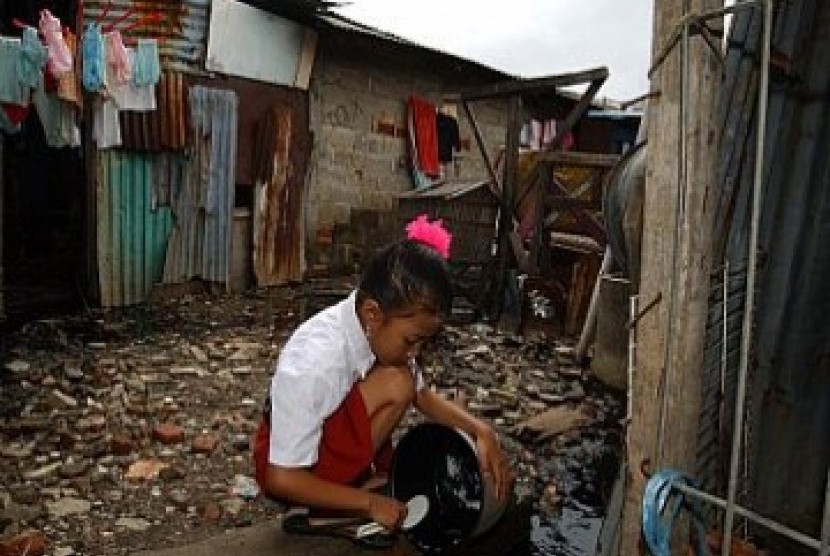REPUBLIKA.CO.ID, JAKARTA-- Social political analyst of State University of Jakarta Ubedilah Badrun assessed that the decline in poverty ratio did not reflect actual conditions. It was influenced mainly by the disbursement of social assistance.
Ubeidillah said it was an instant and altruistic policy. "People managed to survive from poverty not because there has been an increase of productivity," Ubeidilah said to Republika.co.id on Wednesday.
Poverty rate should also be observed from the irony in economy, namely food inflation. The inflation rate for rice reached 8.57 percent, chicken eggs 2.81 percent, chicken meat 4.87. In addition, inflation of chili pepper was 49.91 percent and red chill was 53.87 percent.
From the territorial perspective, the reduction of poverty ratio was also uneven. For example, referring to the latest Central Bureau of Statistics (BPS) data, the people living below poverty line mostly lived in Java (13.94 million), Sumatra (5.98 million), Sulawesi (2.06 million), Bali and Nusa Tenggara (2.05 million), Maluku and Papua (1.53 million).
"So, the reduction of poverty rate is not realistic because of the way it was reduced -- which was by disbursing social assistance -- and the fact that the inflation rate of basic needs is still high," Ubedillah explained.
According to Ubeidilah, in the context of constructing the elite's image, the government's decision to disburse social assistance massively could be seen as imaging policy. It was related to 2019 presidential eletion. "The ruling government is trying to build their image," he remarked.
Earlier, National Development Planning Minister and also Head of the National Development Planning Agency (Bappenas) Bambang Brodjonegoro explained that the key factor to reduce the poverty rate is the government's intervention. The smooth distribution of social assistance in the first quarter of 2018 was one of the keys in reducing poverty ratio.
For the first time in Indonesia, poverty ratio only reached 10 percent. "However, there is still one important aspect that is to manage the inflation rate. It is not 100 percent dependent on the government, but there are several factors involved," Bambang said here on Wednesday.
He remarked that a high inflation rate will make the increase in income worthless. "Hence, it is crucial for us to maintain the inflation rate," he explained.
Earlier, the Central Bureau of Statistics (BPS) said the number of people living below the poverty line dropped to 25.95 million or 9.82 percent of the population in March 2018 from 27.77 million or 10.64 percent of the population a year earlier. The poverty ratio (in March, 2018) was the lowest compared with the ratios in the earlier periods, BPS head Suhariyanto told reporters here on Monday.
Suhariyanto said the number of people categorized as poor in March 2018 dropped 1.82 million from a year earlier. The number of poor people in urban areas in March, 2018 totaled 10.14 million or 7.02 percent and in rural area 15.81 million or 13.2 percent.
In March, 2017, the number of poor people in urban areas totaled 10.67 million or 7.72 percent and in urban areas totaled 17.1 million or 13.93 percent.
Suhariyanto said the types of food commodities having big effect on poverty in urban and rural areas are rice, cigarettes, eggs, instant noodle and refined sugar, and non food commodities include houses, gasoline, electricity education, and toiletry.


